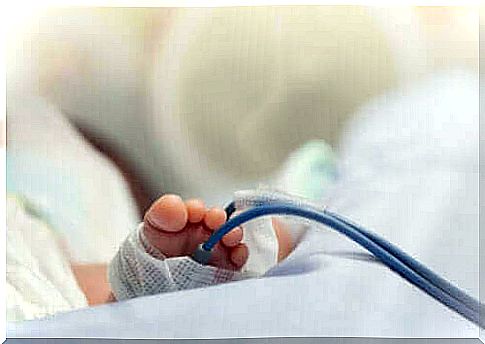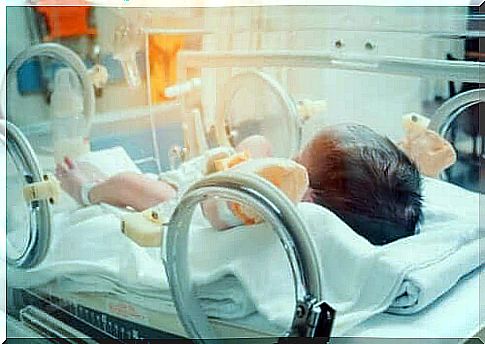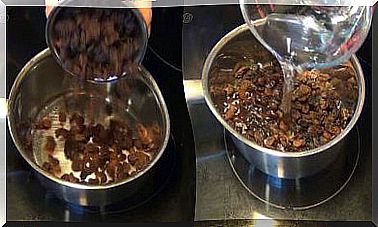Blood Poisoning In Babies And Children: Warning Signs And Symptoms

Blood poisoning in babies and children is a serious disease that can lead to death in some cases. It is a medical emergency that needs to be treated as soon as possible as time is of the essence. For this reason, it is very important to know the warning signs of this disease.
People with a weakened immune system are at greater risk. This serious disorder occurs more often in older adults, people with chronic illnesses, and those who have suffered significant physical harm.
What is blood poisoning?
Blood poisoning is also called systemic inflammatory response syndrome (SIRS). It occurs when the body responds disproportionately to an infection. Although everyone can get SIRS, sepsis in babies and children has its peculiarities.
First, it usually causes a release of chemicals into the bloodstream to fight infection. The effect is inflammation throughout the body. As a consequence, tissue and organs are damaged. It can lead to malfunction in several organs.
This abnormal reaction in the immune system affects cardiovascular, neural, hormonal, energetic, metabolic and coagulation functions. In the most extreme cases, it leads to death.

Types and types of presentation
Experts classify blood poisoning based on how severe it is, how many organs are affected, and the way the body responds to the medications that the doctor prescribes. These are the types of blood poisoning that exist:
- Simple blood poisoning. When the disease has not damaged any organ.
- Severe blood poisoning. When at least one organ fails or there is a significant drop in blood pressure that treatment can correct.
- Septic shock. If there is a significant drop in blood pressure, it should be treated immediately with the appropriate medicines for this purpose.
In the case of sepsis in infants and children, this disorder is also classified into two primary groups:
- Neonatal sepsis. The one that hits babies shortly after birth. It occurs within 90 days after birth. If it occurs during the first few days, it is early sepsis.
- Sepsis in older children. It occurs after the baby is three months old.
Warning signs of blood poisoning in babies and children
Blood poisoning in babies and children is a serious disorder that can be treated. The important thing is to go to the doctor as soon as possible. Early detection of this disorder often makes a difference between life and death.
In most cases, blood poisoning occurs after an infection, which can be in the urinary tract, skin, bones or lungs. We should note that premature babies and babies with low birth weight are more likely to suffer from blood poisoning. Age is a risk factor.
The primary symptoms are as follows:
- Fever or abnormally low temperatures.
- Fast pulse.
- Fast breathing.
- Cold hands and feet.
- Moist skin.
- General confusion, dizziness and disorientation.
- Dyspnoea or shortness of breath.
- Nausea and vomiting.
Also, keep an eye out for a number of warning signs. They all suggest a serious disorder that a doctor should treat as soon as possible.
If more than one sign and symptoms appear at the same time, seek medical attention immediately. When the child is weak, unwell or seems ill, the diagnosis and treatment must also be accelerated.
Dry diapers for more than 12 hours in babies are another sign of something serious, as it indicates dehydration and the body’s attempts to hold on to fluid. It is associated with a decrease in blood pressure and reduced flow of blood to the kidneys.

Immediate consultation should be performed based on the symptoms. Early medical intervention reduces the risks.
Prevention of sepsis in infants and children
There are two ways to prevent sepsis in babies and children:
- Primary. Immunization using vaccines.
- Secondary. With long-term antimicrobial prophylaxis and by giving antibiotics, antivirals and antifungals, especially to patients with weakened immune systems.
The World Health Organization (WHO) issued a series of recommendations to help all families avoid blood poisoning especially whore babies and children. We should mention that this disease affects three million newborns and 1.2 million older children each year.
The primary reservations are the following:
- Good hygiene.
- Use of clean drinking water.
- Safe preparation of food.
- To follow the vaccination program.
- To keep sanitation services in good condition.
With regard to healthcare professionals , the WHO advises them to have good hand hygiene. Likewise, they should keep their work environment clean, regularly request equipment for infection control, and establish protocols to prevent infection each time a patient is treated.









